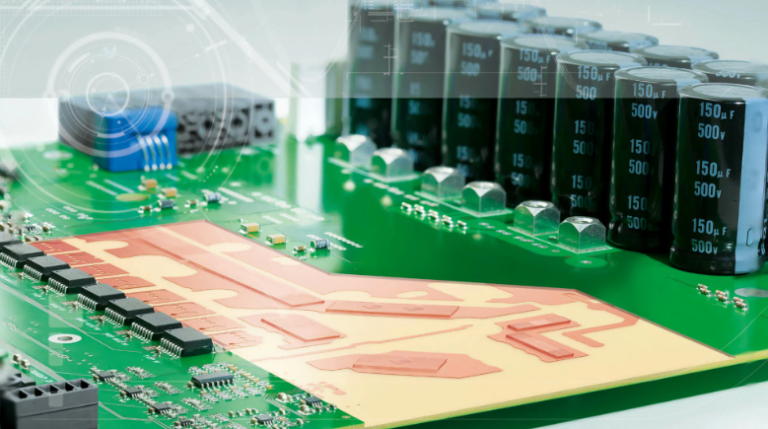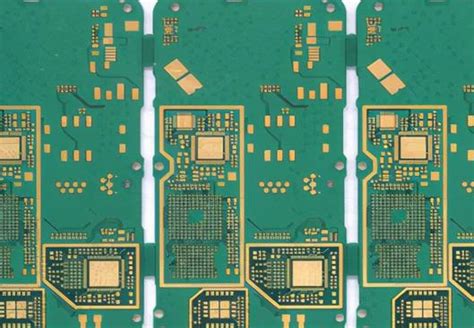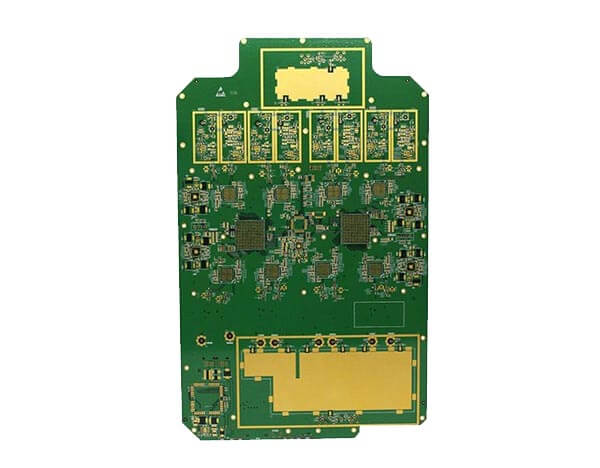Unlocking Efficiency: The Future of Contract Manufacturing in Electronics
Key Takeaways
In the fast-paced world of electronics, contract manufacturing has become a cornerstone for companies seeking to optimize their operations. One significant aspect of this domain is electronic assembly, which encompasses various processes such as pcb assembly and the creation of complex pcba (printed circuit board assembly) products. As the industry evolves, understanding how to leverage innovative strategies and technologies is paramount for enhancing efficiency and quality. The integration of advanced manufacturing techniques, such as automation and artificial intelligence, aids in minimizing production times while ensuring adherence to strict regulatory standards. Furthermore, fostering strong collaborations between manufacturers and clients enhances communication, reducing misalignments in project goals. By embracing best practices in quality assurance, organizations can maintain their competitive edge while meeting increasing consumer demands. As we look ahead, the future of contract manufacturing will likely involve even more integrated solutions that enhance operational agility and responsiveness, ultimately shaping a more resilient electronics manufacturing landscape.
The Evolution of Contract Manufacturing in Electronics: A Historical Perspective
The landscape of contract manufacturing in electronics has undergone significant transformation over the decades, driven by technological advancements and shifting market demands. Initially, companies relied heavily on in-house production, which often resulted in high operational costs and limited flexibility. As the electronics industry expanded, the need for more efficient production methods became apparent. This paved the way for contract manufacturing, allowing firms to outsource their production needs and focus on core competencies such as design and innovation.
The emergence of pcb assembly services played a crucial role in this evolution. With advancements in technology, pcba (printed circuit board assembly) processes became more sophisticated, enabling faster turnarounds without compromising quality. As manufacturers adopted lean principles and just-in-time strategies, the entire electronic assembly process became more streamlined.
Moreover, the globalization of supply chains introduced new opportunities and challenges. Manufacturers gained access to a wider pool of resources and labor, driving competition and innovation across the board. Today, organizations utilize advanced technologies—such as automation and digital collaboration tools—to improve their workflows further.
“In the world of electronics manufacturing, staying ahead means adapting to changes swiftly—efficiency is the name of the game.”
This historical perspective reveals not only how contract manufacturing has reshaped the industry but also highlights how quality assurance, strategic partnerships, and innovative assembly methods have become integral to success in today’s market. The future promises even more disruptive changes as companies continue to embrace technology-driven solutions for their manufacturing needs.
| Year | Milestone in Contract Manufacturing |
|---|---|
| 1980 | Rise of outsourcing; firms begin using external manufacturers |
| 1990 | Introduction of just-in-time delivery systems |
| 2000 | Adoption of lean manufacturing principles |
| 2010 | Increased usage of automation in electronic assembly |
| 2020 | Growth of digital collaboration tools |
In summary, understanding this evolution is essential for stakeholders who wish to navigate the complexities of electronic manufacturing effectively. Adapting to these changes will be critical for businesses aiming to thrive in a competitive landscape that demands ever-increasing efficiency and quality in contract manufacturing practices.
Key Technologies Transforming Electronic Assembly
In today’s fast-paced electronics industry, key technologies play a pivotal role in redefining how contract manufacturing processes, particularly pcb assembly, are conducted. The advent of advanced automation systems has significantly enhanced productivity and precision in electronic assembly operations. These systems allow for better inventory management and reduced human error, leading to higher-quality standards in the production of printed circuit boards (PCBs). Furthermore, the integration of smart technologies and IoT solutions enables real-time monitoring of assembly lines, empowering manufacturers to quickly adapt to fluctuations in demand while minimizing downtime. The increasing utilization of robotics has streamlined complex assembly tasks, promoting compatibility with various components while reducing cycle times. With innovations like surface mount technology (SMT) and double-sided assembly processes being adopted, electronic manufacturers can achieve more compact designs without compromising performance. Additionally, machine learning algorithms are being leveraged to predict maintenance needs for equipment involved in pcba, thereby preventing breakdowns and ensuring continuous operation. Collectively, these technologies not only enhance efficiency but also foster a collaborative ecosystem among manufacturers, paving the way for a robust future in contract manufacturing for electronics.
Strategies for Enhancing Efficiency in Contract Manufacturing
In the competitive landscape of contract manufacturing, particularly in electronics, strategies to enhance efficiency are crucial for staying ahead. One pivotal approach is optimizing pcb assembly processes through the implementation of advanced technology. By incorporating state-of-the-art automation and robotics, manufacturers can significantly reduce labor costs and minimize human error, ensuring high-quality pcba output. Additionally, embracing lean manufacturing principles can streamline workflows and eliminate waste, leading to faster turnaround times without compromising on quality. Another key strategy involves fostering a culture of continuous improvement; this includes regular training for employees on best practices in electronic assembly and encouraging innovation to tackle challenges as they arise. Collaborating closely with suppliers to ensure timely delivery of components further drives efficiency, as it helps avoid production delays and excess inventory costs. Moreover, utilizing real-time data analytics throughout the production cycle can offer insights into operational bottlenecks, enabling quick adjustments that enhance overall productivity. By focusing on these strategies, organizations can not only improve their operational efficiency but also position themselves strategically for future growth in the ever-evolving field of contract manufacturing in electronics.
Quality Assurance in Electronic Assembly: Best Practices
In the fast-paced world of contract manufacturing, particularly in electronic assembly, maintaining exceptional quality assurance practices is paramount. Effective quality assurance begins with the selection of high-quality materials for pcb assembly. Ensuring that each component meets stringent standards not only affects the performance of the final product but also streamlines the entire manufacturing process. Regular inspections throughout the pcba production cycle, from material procurement to final assembly, play a crucial role in identifying potential issues early on, thereby minimizing costly rework and enhancing overall productivity.
Incorporating various quality control measures, such as automated testing and real-time monitoring, provides insights into each stage of production. For example, utilizing advanced technologies like Machine Vision systems can significantly improve defect detection rates. Moreover, fostering a culture of continuous improvement among team members is vital; engaging employees in quality initiatives can lead to innovative ideas that elevate best practices in electronic assembly.
Documentation and adherence to industry standards also support robust quality assurance frameworks. Companies should implement comprehensive training programs for personnel involved in production to ensure they are well-versed in compliance regulations and latest technological advancements within the sector. This commitment not only assures clients of the product’s reliability but also reinforces long-term partnerships based on trust and transparency. By integrating these best practices into their operational strategies, organizations can position themselves as leaders in the competitive landscape of contract manufacturing for electronics.
Collaborative Approaches: Improving Partnerships in Electronics Manufacturing
In the dynamic world of contract manufacturing, particularly in the realm of electronics, forging strong collaborative partnerships is crucial for success. Manufacturers and clients alike benefit from open communication and shared goals, ensuring that both parties are aligned throughout the pcb assembly process. By leveraging strategic alliances, companies can optimize their pcba processes, sharing best practices and resources that lead to improved efficiency. This collaboration enables teams to tackle challenges more effectively, as they work together to identify opportunities for innovation within their operational frameworks. Furthermore, integrating feedback loops between manufacturers and clients fosters a culture of continuous improvement, allowing for real-time adjustments based on market demands. To remain competitive, organizations must embrace these collaborative approaches, as they not only enhance relationships but also drive quality outcomes in electronic assembly projects. In this evolving landscape, the importance of partnership cannot be overstated; it is a cornerstone that supports the advancement of technology and processes in the industry.
The Role of Automation in Electronic Assembly Processes
Automation has become a pivotal force in revolutionizing electronic assembly processes, particularly in contract manufacturing. By integrating automated systems, manufacturers can significantly enhance the efficiency and accuracy of pcb assembly and PCBA operations. These technologies allow for the precise placement of components on printed circuit boards, reducing the error rate that is often associated with manual assembly. Furthermore, automation facilitates faster production cycles, enabling companies to meet growing market demands without compromising on quality.
The implementation of advanced robotics and machine vision systems also contributes to superior quality assurance processes. Automated equipment can perform detailed inspections that ensure each assembly meets predetermined standards, thus reinforcing reliability in the final product. This shift towards automation not only streamlines operations but also fosters a culture of innovation within organizations, as resources are freed up for research and development to advance new methodologies and technologies.
Moreover, the collaborative integration of automation within electronic assembly aligns with the industry’s trend toward smart manufacturing. By leveraging data analytics and Internet of Things (IoT) technologies, manufacturers can optimize workflows and predict maintenance needs proactively, minimizing downtime. As automation continues to evolve, it is clear that its role in pcb assembly will be instrumental in shaping a more resilient and adaptive contracting environment for electronics manufacturing firms worldwide. The ongoing advancements signify a future where speed meets precision, ultimately driving greater competitiveness in the global market.
Future Trends in Contract Manufacturing for Electronics
As the landscape of contract manufacturing continues to shift, several future trends are emerging that promise to redefine the pcb assembly and pcba sectors. The growing demand for customized solutions has led manufacturers to adopt more agile development processes, allowing for quicker turnaround times and greater responsiveness to market needs. Moreover, advancements in automation technology are streamlining electronic assembly, increasing productivity while simultaneously reducing errors and waste. The integration of smart technologies, such as the Internet of Things (IoT) and artificial intelligence (AI), is not merely enhancing operational efficiency but is also paving the way for improved data analytics, enabling manufacturers to predict issues before they arise.
Collaboration is becoming a cornerstone of success; this trend underscores the importance of building robust partnerships that extend beyond traditional manufacturing frameworks. By fostering collaboration among design engineers, assembly partners, and supply chain members, organizations can enhance communication and innovation. Another key aspect is sustainability, with more companies prioritizing eco-friendly practices throughout the production cycle. This shift not only caters to growing consumer preferences but also aligns with global initiatives aimed at reducing environmental impact.
Ultimately, as we look to the horizon of contract manufacturing in electronics, embracing these trends—particularly in pcb assembly and pcba—will be critical for companies aiming to maintain a competitive edge in an ever-evolving market landscape. Organizations that proactively adapt to these trends will likely reap significant benefits from improved efficiency and enhanced product quality.
Case Studies: Successful Implementations of Innovative Manufacturing Strategies
The landscape of contract manufacturing in electronics, particularly in pcb assembly and pcba, is marked by numerous success stories demonstrating the impact of innovative manufacturing strategies. One notable case involves a leading electronics manufacturer that adopted advanced automation technologies, significantly streamlining their electronic assembly processes. By implementing robotic systems for soldering and component placement, they achieved a remarkable decrease in production time while maintaining a high level of quality assurance. This shift not only boosted efficiency but also reduced labor costs, prompting the organization to expand its product lines with quicker turnaround times.
In another example, a company focused on building stronger partnerships with its contract manufacturing suppliers. By engaging in collaborative planning sessions and integrating real-time data sharing platforms, they maximized production efficiency and minimized delays caused by supply chain disruptions. This strategy emphasized the importance of transparent communication and continuous improvement, leading to a significant enhancement in product quality during the pcb assembly phase.
These case studies illustrate how companies harness various approaches—from automation to collaborative frameworks—to not only enhance their output but also adapt to the rapidly changing demands of the electronics market. As these strategies continue to evolve, they pave the way for further innovations in pcba, shaping the future of contract manufacturing in this dynamic industry.
Conclusion
In summary, the landscape of contract manufacturing in the electronics sector is undergoing significant transformations, particularly in areas such as pcb assembly and pcba. The continuous advancement of technologies like automation and smart manufacturing systems has led to enhanced operational efficiency and improved quality standards. As companies embrace more collaborative approaches in their partnerships, the integration of expertise from various stakeholders is fostering innovation. This synergy not only drives successful project outcomes but also ensures that manufacturers can meet the dynamic demands of the market swiftly. Additionally, adopting best practices in quality assurance is imperative in maintaining competitiveness within this rapidly evolving industry. Therefore, as organizations navigate the future of contract manufacturing, they must remain agile and open to integrating new strategies that emphasize efficiency and partnership to thrive in an increasingly complex environment.
FAQs
What is contract manufacturing in the context of electronics?
Contract manufacturing in electronics involves outsourcing production processes to specialized firms that handle various aspects of manufacturing, particularly electronic assembly.
How does PCB assembly fit into contract manufacturing?
PCB assembly is a crucial component of contract manufacturing, as it encompasses the process of assembling electronic components onto a printed circuit board (PCB), which is essential for the functionality of electronic devices.
What are the benefits of using a contract manufacturer for PCBA?
Utilizing a contract manufacturer for PCBA can lead to enhanced efficiency, reduced production costs, and improved access to advanced technologies that help in maintaining high-quality standards.
How can quality assurance be maintained in electronic assembly?
Implementing robust quality assurance strategies, such as regular inspections and testing throughout the electronic assembly process, ensures that components meet stringent regulatory and performance standards.
What role does automation play in electronic assembly?
Automation in electronic assembly significantly boosts production speed and accuracy while minimizing human error. This technology optimizes processes, making them more reliable and cost-effective.







